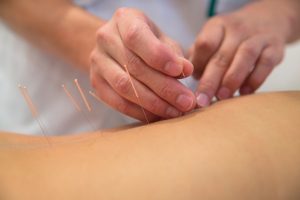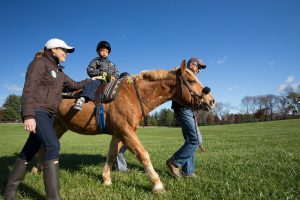When your child is diagnosed with cerebral palsy, the first thought likely to go through your mind is “What are we going to do?” Be assured that while there is no true cure for this condition, there are myriad treatments of cerebral palsy that can greatly help your child achieve their full potential.
It is important to know from the outset that your child’s case of cerebral palsy is as unique as they are, which means that you have the ability and freedom to customize a cerebral palsy treatment plan to your child’s specific needs.
In the past, treatment of cerebral palsy was approached almost exclusively through a combination of orally administered drugs (used to control seizures and muscle spasms), physical or occupational therapy, and sometimes even surgery.
However, in recent years, parents, caregivers and doctors have seen the effectiveness of unconventional therapeutic approaches to cerebral palsy treatment, especially those that are rooted in traditions outside of Western medicine.
In particular, complementary and alternative medicine (CAM) have much to offer cerebral palsy patients. These forms of treatment offer a subtler approach to relieving symptoms and improving a child’s physical or behavioral ability. They offer an alternative to the side effects induced by many pharmaceutical drugs used in treatment of cerebral palsy. Best of all, they allow for a more intuitive response to the symptoms of cerebral palsy, placing more control in the hands of parents to discern and make decisions about their child’s care.
Alternative and complementary medicine practices are not opposed to conventional Western medicine. Instead, they present new ways of seeing the same problems. Many parents and caregivers have seen very encouraging results by combining an array of alternative and complementary therapies with their child’s primary medical treatment for cerebral palsy.
As your child grows, you may find that certain aspects of their condition become more pronounced, while others may grow less acute. In essence, your child’s case of cerebral palsy is nearly as unique as they are, which means that their cerebral palsy treatment should be unique as well. A good primary care physician will recognize this and help guide you in finding treatments for cerebral palsy from a variety of sources.
The following list includes some of the most popular forms of alternative and complementary therapy treatments for cerebral palsy patients. As you and your child explore these options, remember that the key is to look for a cerebral palsy treatment approach that works well for your child and their individual case.
Acupuncture
 A medical protocol that has existed for thousands of years, acupuncture is the best-known form of traditional Chinese medicine (TCM). This therapy is widely respected throughout the medical community for its ability to help cerebral palsy patients by relieving muscle tension, pain and discomfort, as well as significantly boosting brain development and reduce brain atrophy.
A medical protocol that has existed for thousands of years, acupuncture is the best-known form of traditional Chinese medicine (TCM). This therapy is widely respected throughout the medical community for its ability to help cerebral palsy patients by relieving muscle tension, pain and discomfort, as well as significantly boosting brain development and reduce brain atrophy.
A recent study showed that children with cerebral palsy who received acupuncture in addition to traditional rehabilitative therapy showed a 32% improvement in the therapy’s overall effectiveness.
An acupuncture session consists of lightly penetrating the skin with tiny needles within targeted areas of the body. For those uncomfortable with needles, a milder form known as acupressure can be a good place to start.
Adeli Suit
Pioneered by the Russian space program in the 1970s, this therapy was developed to help astronauts prevent injury and disability while working in outer space. The Adeli suit is a form of dynamic correction clothing that works along the same principle as a knee wrap used by runners to prevent or treat shin splints. Consisting of shoes, knee-pads, shorts and shoulder-pads all interconnected with elastic bands, the Adeli suit provides deep compression force on the skin, muscle, and bone. In the 1990s, physicians began to use the Adeli suit for patients with cerebral palsy. Use of the Adeli suit with cerebral palsy patients, especially children, proved helpful in retraining the body to achieve proper alignment and coordinating feedback between the muscles and the brain.
For children with cerebral palsy, a session with the Adeli suit starts with adjusting the tension of the bands between the suit’s pieces to create a slight resistance for the child to work against. The child is then led through a series of movements that, because of the suit, demand a little more effort and concentration to achieve. Over time, the child’s muscles are strengthened, their movements are made more precise, and the body comes into better alignment.
Alexander Technique
Named for the 19th century actor who developed it, this therapy focuses on the relationship between the head and the spinal cord. The central tenet of Alexander Technique is that when the head and spine are optimally aligned, the rest of the body is able to improve its strength, balance and motor function.
Typically taught in a one-to-one setting, Alexander Technique is extremely gentle and subtle, which makes it a good choice for cerebral palsy patients with severely limited motor function, spastic muscle behavior and/or social anxiety.
Biofeedback
Biofeedback is the short name for “augmented biofeedback therapy.” This treatment helps children with cerebral palsy by measuring and showing physical events that they normally do not feel or notice, and teaches the child to self-regulate by fostering greater awareness.
For example, in a biofeedback session, a child with cerebral palsy might sit in front of a video screen that shows a room with objects in it, and points out a trajectory along which the child should move their arm to pick up an object and put it down. When the task is properly completed, pleasant music might play or a new image might appear on the screen.
Hyperbaric Oxygen Therapy
This form of treatment for cerebral palsy is focused on increasing the percentage of oxygen in the blood. It is believed that since disease and injury thrive in areas of the body with low oxygen tension, raising the oxygen levels within the patient’s muscle tissue can improve the function and growth of damaged cells within the patient’s central nervous system, especially in the brain.
In this treatment, cerebral palsy patients are exposed to breathe 100% pure oxygen while sitting in a slightly pressured chamber. Under this pressure, oxygen is able to quickly saturate the red blood cells and travel deeper into the body via the lymph, intestinal fluid and cerebrospinal fluid.
Hippotherapy
 A form of therapy as old as medicine itself, the use of horseback riding to improve a cerebral palsy patient’s balance and coordination has recently experienced a big revival in popularity.
A form of therapy as old as medicine itself, the use of horseback riding to improve a cerebral palsy patient’s balance and coordination has recently experienced a big revival in popularity.
Under the guidance of a trained hippotherapist, children with cerebral palsy are placed astride a horse and ride slowly around a contained environment. The slow, rhythmic movement of the horse’s body triggers a parasympathetic response in the child’s body, stimulating reflexive instincts to achieve balance and coordination. Over many sessions, children with cerebral palsy develop better motor skills and improve their ability to verbally and physically articulate commands to the horse.
Music Therapy
Music therapy is an unusually holistic form of treatment for cerebral palsy that addresses the four main areas impaired by cerebral palsy: cognition, motor skills, communication and social skills. By harnessing the brain’s deep-seated response to tone, resonance and rhythm, music therapy creates an environment that is at once stimulating and soothing.
One major advantage of music therapy is its orientation toward daily “success.” Children with cerebral palsy who engage regularly in music therapy enjoy the collaborative effort of creating music with a group. Studies on music therapy prove its effectiveness with cerebral palsy patients in improving mood, relieving pain and increasing range and self-control with personal expression.
Therapeutic Electrical Stimulation Therapy
Commonly known as TES, this form of treatment for cerebral palsy directly impacts the muscle pain, tension and spasticity associated with cerebral palsy. TES can take place within the home as easily as in a clinical environment—it simply involves sending gentle electrical signals from a small generator through electrodes placed on the skin over atrophied or weak muscles.
Not to be confused with more strenuous forms of electrical stimulation therapy, TES involves a very low voltage applied over a long period of time. It is gentle enough to be applied even while the patient sleeps.
Primarily effective as a palliative for spasticity and pain, TES shows significant visible improvement for cerebral palsy patients when applied regularly over a period of several months.
